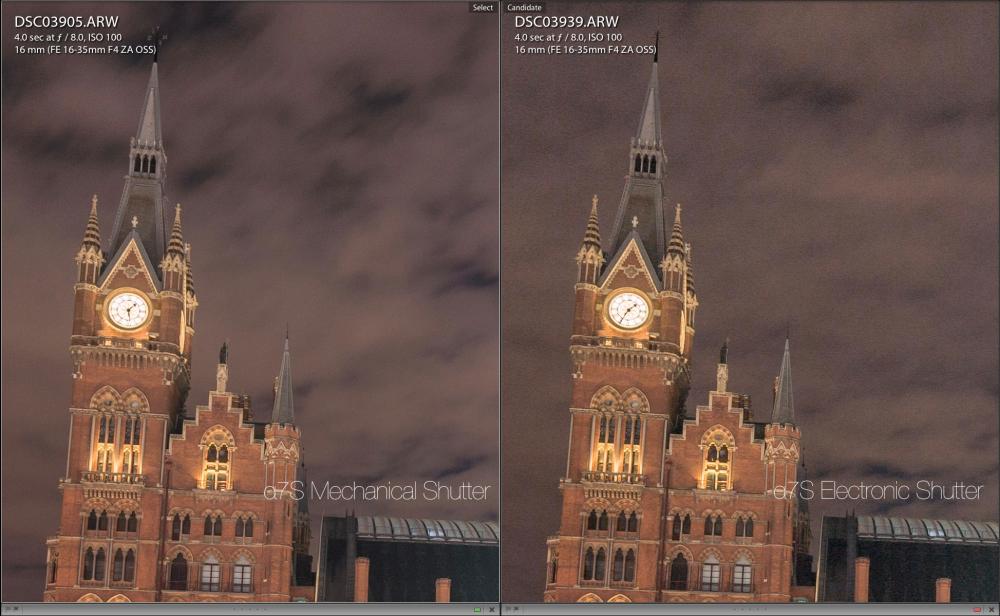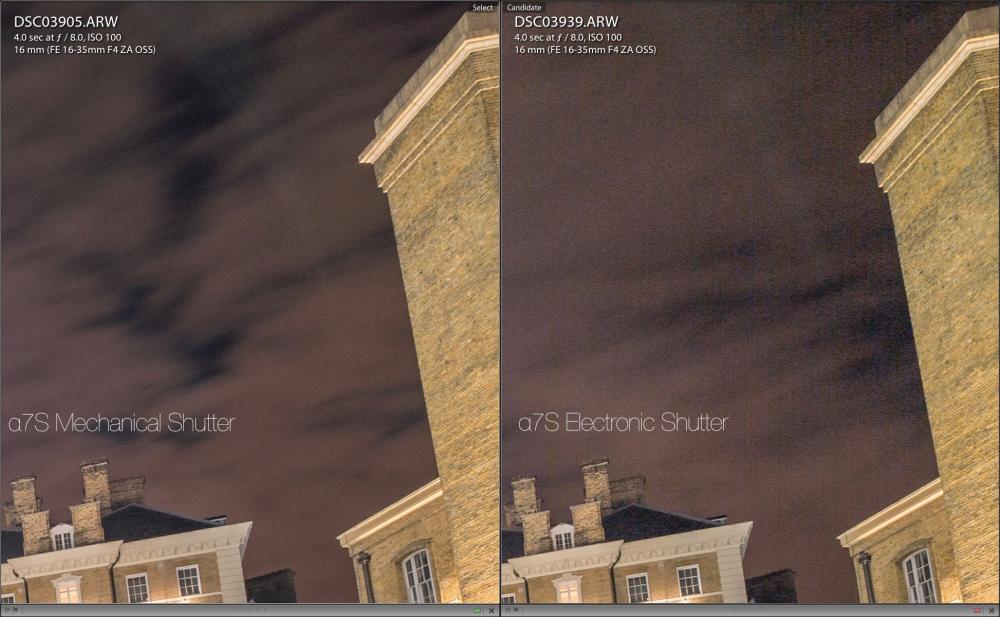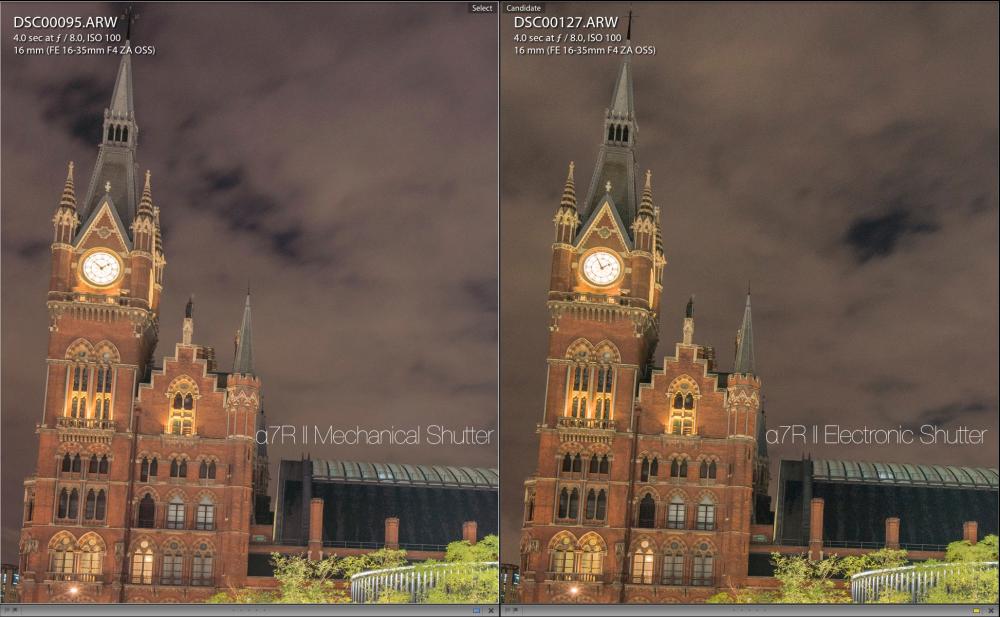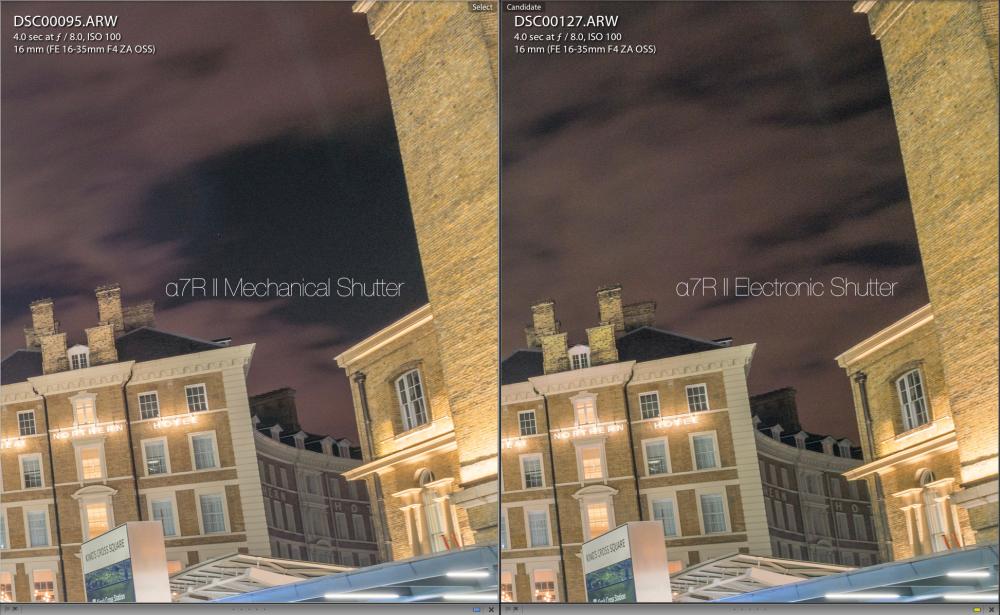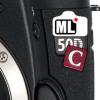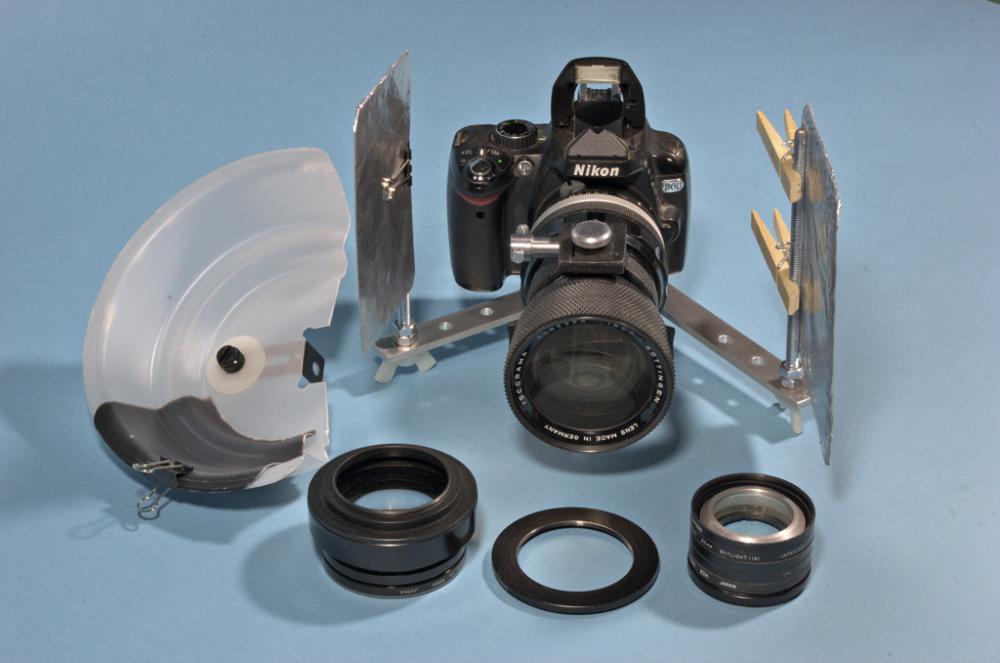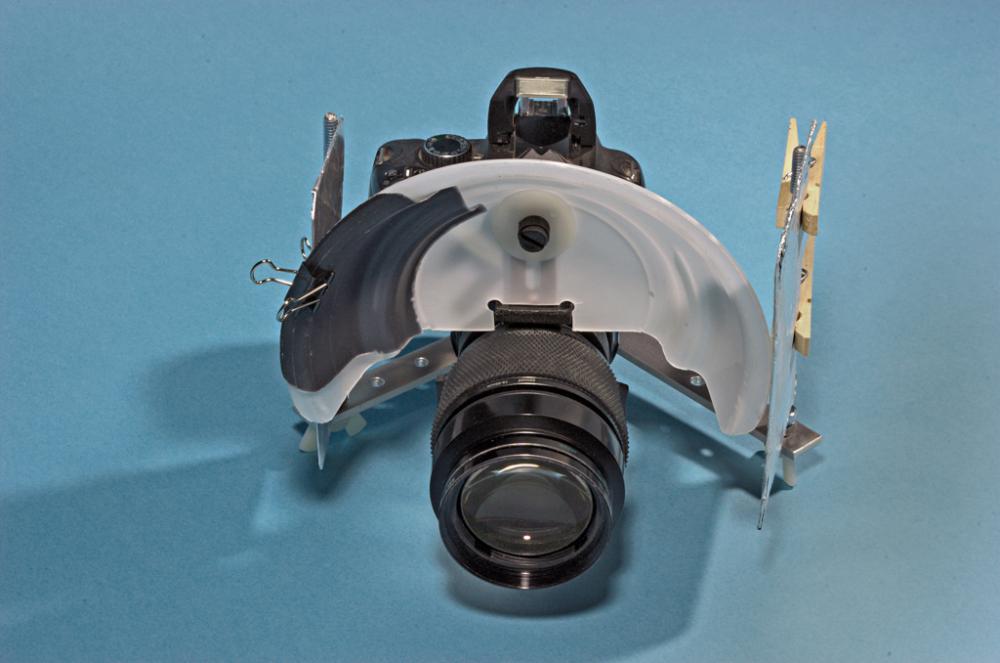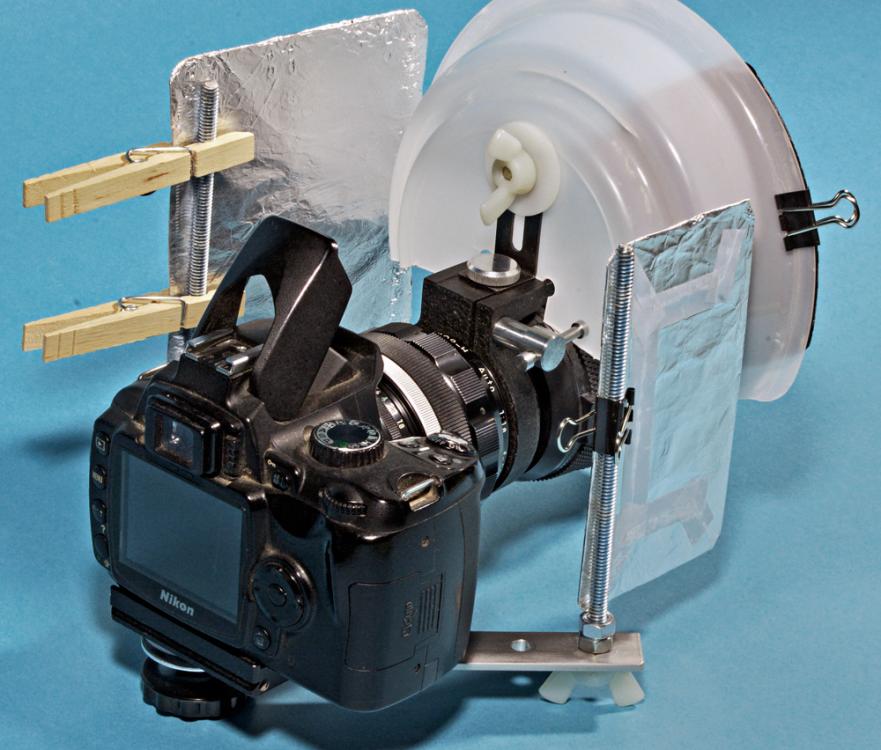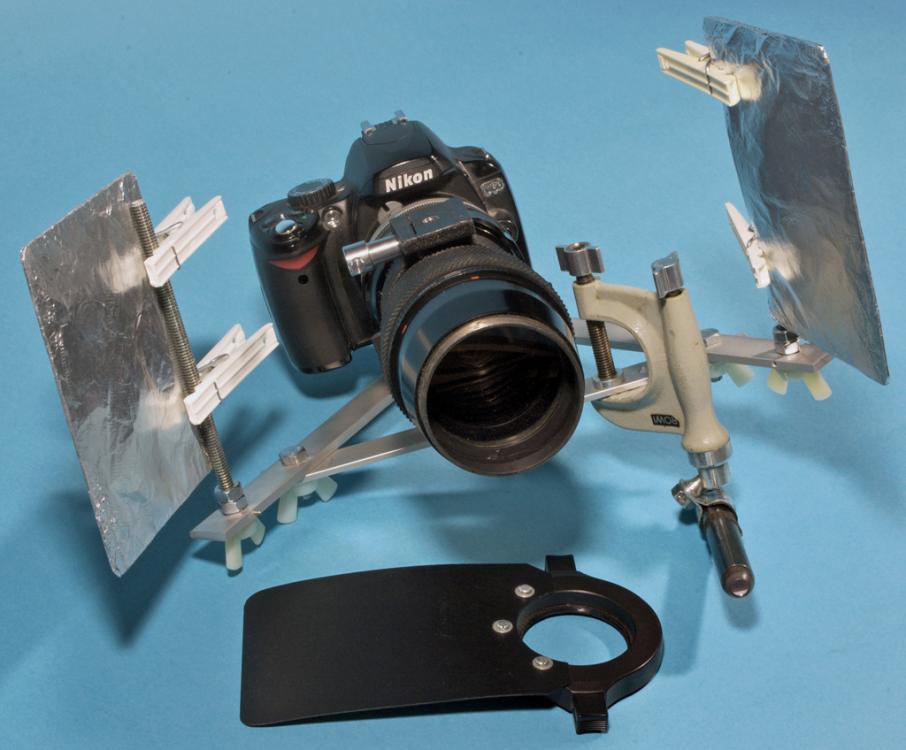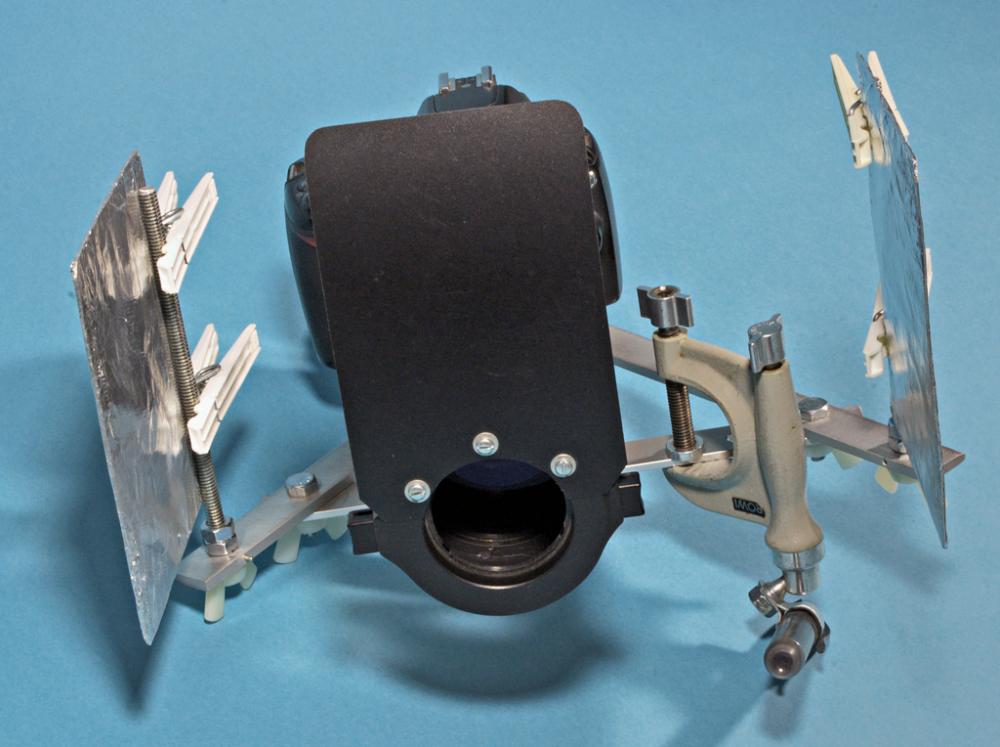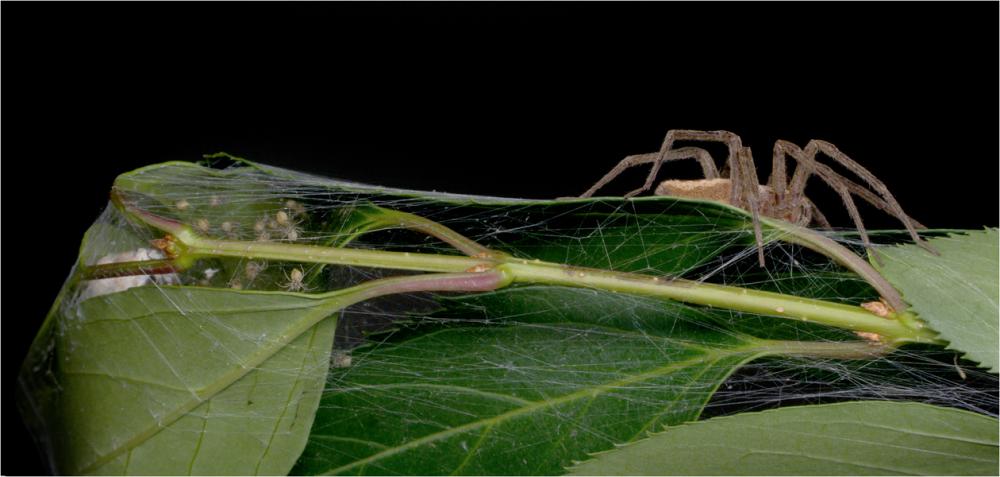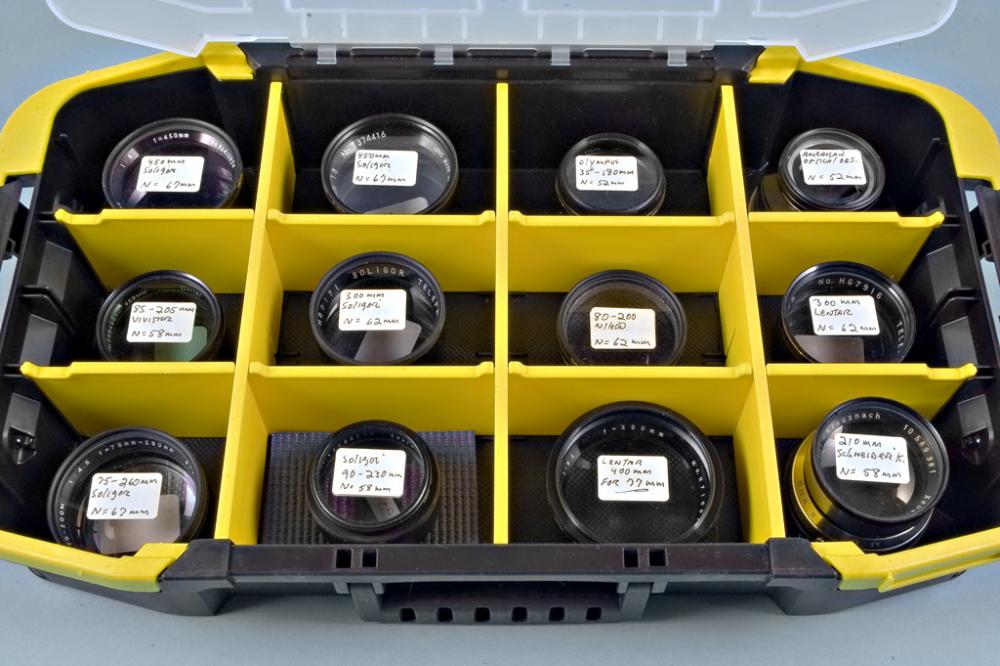Leaderboard
Popular Content
Showing content with the highest reputation on 08/04/2015 in all areas
-
We had a lot of fun making this one, three people in crew in total and a £500 budget for all the extras (props location etc) the kit is our own Animation took a long time, and VHS style was tough to build! Happy to answer questions on production if anyone is interested!6 points
-

Who will break the interenal 10 bit hybrid barrier?
Xavier Plagaro Mussard and 4 others reacted to sunyata for a topic
I get the feeling you want to see some sexy slo-mo footage as a test, but that really wouldn't tell you much empirically about bit depth, chroma sub-sampling and compression as it affects grading. this test was done with a linear radial gradient that simply changes color.. the color part to test certain colors that don't do so well with compression. it also tests resizing 4k to HD converted to float, to see what that gets you, in addition to various color spaces and codecs. it goes fast so you need to pause frequently and watch fullscreen. (the preview window lets you see more closely what the artifacts look like)5 points -

A7rii vs ursa mini
Cinegain and 2 others reacted to Nick Hughes for a topic
Nope. If you're stuck in that loop, another camera is not going to get you out of it.3 points -
Announcement is scheduled for August 10th. The price should be around 2500$. http://cinescopophilia.com/xeen-cinema-lenses-from-samyang/ Frank Glencairn has them for testing and says that it is a brand new optical design not just rehoused old optics. http://www.reduser.net/forum/showthread.php?134751-New-line-of-pro-cine-lenses-by-Samyang http://www.personal-view.com/talks/uploads/FileUpload/65/e486e45341e036bcbc5a202df2a759.jpg http://www.personal-view.com/talks/uploads/FileUpload/2a/edc6aaabaeb3ba0e4b6c4231fd6618.jpg2 points
-
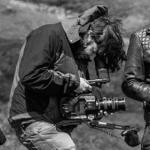
Who will break the interenal 10 bit hybrid barrier?
Jimmy and one other reacted to Oliver Daniel for a topic
There is definitely a difference between 8 bit and 10 bit. It just depends how well the camera utilises the feature with all that tech inbetween...(and other boring obvious statements). No need to get angry about it though. Why be emotional about bit rates? What a boring thing to be emotional about. The world is out there, somewhere, isn't it?2 points -

Who will break the interenal 10 bit hybrid barrier?
jgharding and one other reacted to AaronChicago for a topic
C100 8 bit is pretty incredible for 24/Mbps. I've tried a A/B tests with the Ninja Star Pro Res and had to do a 400% zoom with a heavy grade to notice ANY difference. I'd say 90% of shots internal is good enough on that camera.2 points -
Yeah, I saw it mentioned on mirrorlessrumors. With SLR Magic and their CINE APO and the Veydra Mini Primes, this could be another interesting addition worth keeping an eye on. I think the only one who could pull of rehousing is Sigma (and that's already being done by others, which is also happening for some Tokina and Nikon lenses for example). I do feel like Rokinon would really have to up it when asking 2499 for a lens. Frank appears rather impressed, so that sounds promising. I appreciate these kind of developments, it makes the market an interesting playground. Actually does sound quite similar to what Tokina is doing with zooms: http://www.tokinacinema.com/lenses.html . Though, mind you: 'using the successful optical formula'. So, claiming it's not just rehoused (like so) doesn't neccesarily mean they aren't using old optical formulas.2 points
-
Looks, picture profiles, LUTs and Log. For those who were recently talking about understanding log and how it works etc. Here's a pretty good article from newsshooter that breaks it down http://www.newsshooter.com/2015/07/27/looks-picture-profiles-luts-and-log-why-when-and-how-you-should-use-them/2 points
-
Hobbyists benefit from accurate and pleasing skin tone color by not having to deal with LUTs, which are very specialized and only work as intended with a known input color space and proper levels. For professional paid work, we don't want to waste time color correcting inaccurate+unpleasing colors from the camera. Time is money. Also very important is showing clients straight-from-camera footage. For pleasing skintones, Sony looks comparatively terrible compared to Canon, Nikon, BM, even Panasonic. It's really puzzling since the F35 and F65 look so amazing (but not the F55, F5, FS7, FS700, A7 series and so on). In controlled situations, the F55 (even FS7) can look very close to the Alexa using LUTs, however in practice folks still choose Alexa over F55 etc. if they have a choice. At the high end the ARRI cameras (Alexa, Amira) have class-leading accurate and pleasing skintones, so hiring a colorist isn't needed. For episodic TV, fast high quality production is very important. For film production, colorists are hired to help set the mood and tell the story, not so much to fix broken color from market trailing color science cameras (which won't be used very often except perhaps as crash cams or other limited-use specialized applications). Since Sony works closely with Nikon, why not license Nikon's color science for these cameras? Perhaps that's a question for Nikon ;). Color science is the most valuable element of a digital camera.2 points
-

Who will break the interenal 10 bit hybrid barrier?
Marco Tecno and one other reacted to Don Kotlos for a topic
I put my money on Samsung. Nothing to lose.2 points -
Sony RX100IV + DJI Ronin -m = Dolly Slow Motion Test
Xavier Plagaro Mussard reacted to xzoticskillz for a topic
This is my first official test with the Sony RX100IV. I wanted to create a project that tests 3 things: 1) Slow motion quality 2) Dynamic Range 3) Slow motion with Dolly (using the ronin-m). I decided to use my energized furry friend Simba as my talent. The dynamic range is incredible in 120p due to the high bitrate and I found myself having the best grades in post using this mode. Using the Dji Ronin-m made this setup extremely light and I was able to move extremely quick. I shot this video using only 120p, 240fps, and 480fps. Decided to get creative with the editing. Watch in HD and enjoy!1 point -
Ok, I was able to do a few more tests today. I used the Standard Profile and dialed Sharpness, Saturation and Contrast to -5. I also dialed down Hue to -15. I used the Canon FD 28mm f/2 lens and a Canon 35-70mm f/4 zoom. I converted two versions... One downscaled to 1080p and one 4K version. I tried over and under exposing some shots but haven't graded anything... This is all straight from the camera Here is the 1080p conversion. I am waiting for the 4K version to upload, I will post that when it does1 point
-
My money was on Lumix/Panasonic to bring 10bit recording to the GH5... but it seems the DVX200 is only 8 bit, will they better their new prosumer model? Canon/Nikon seem unlikely to be first to push new tech and Sony seem to be staying put with 8 bit. Feels like the dream of 10bit in a DSLR/Hybrid is still a long way off. 10bit seems to be the last big sticking point. We are seeing 4K, we are seeing log, we are seeing incredible ISO... Yet 10 bit is probably as important a feature as any.1 point
-
Basicially to get similar output you would need a a7rii with an odyssey 7q+ and would end up costing same as ursa mini. Also in 6 months the a7s ii will come out. So before you buy. Have patience. Wait for reviews. Dont blow all your money on the new toy. Issues of skew and jello. Look harder at images Rent and compare cameras. 3 grand plus is a lot of money.1 point
-
Who will break the interenal 10 bit hybrid barrier?
Oliver Daniel reacted to Mattias Burling for a topic
I recently learned that when a person is angry and worked up brain cells are physically deteriorating. Which means that when you're mad, you are literally self destructing. Worth it over bit rate?1 point -

Who will break the interenal 10 bit hybrid barrier?
AaronChicago reacted to jgharding for a topic
I'd like 10-bit, but have been waiting so long and have gotten so used to 8-bit i keep forgetting about it. Not all 8-bit footage is equal mind you, 8-bit C100 is great compared to some 8-bit stuff. I wish one of the pro-sumer companies would just do a Red style compressed raw and be done with it.1 point -

A7rii vs ursa mini
TheRenaissanceMan reacted to Xavier Plagaro Mussard for a topic
I was talking about the Sony!1 point -
1 point
-

Sony A7R II official user thread
Francesco Spiezia reacted to Shield3 for a topic
This. I had a strong hunch it'd overheat. My RX100 overheated, my NEX 5n, NEX-7, etc. I remember 4 years ago going to Florida with the 5n - in 93 degree temps it would only shoot about a minute of video. Lost some precious footage / shooting opportunities of my kids. Yes I'm still bitter, and yes, reliability trumps all.1 point -

Who will break the interenal 10 bit hybrid barrier?
TheRenaissanceMan reacted to Jimmy for a topic
I'll just use my 15+ years in the industry to feel comfortable with my point of view.1 point -

Who will break the interenal 10 bit hybrid barrier?
TheRenaissanceMan reacted to Jimmy for a topic
8 bit can be implemented very well as Canon has shown. But, for more challenging shots, you have to get it spot on in camera. Bandind aside, one of the biggest flaws of 8 bit is saturation. If you want to push it hard, in post, 8 bit is often not enough and starts to show the colour steps. This is vital for skin tones, gradients etc. As has been noted though, the only people using words like "holy grail" are those saying 10 bit is not that great. The rest of us just see it as another piece of the puzzle and one we would like to see hit the mainstream.1 point -
NX500 Test
mercer reacted to peterwhite for a topic
The 1080p video is great enough, love the details. Look forward to the 4K version.1 point -

Who will break the interenal 10 bit hybrid barrier?
TheRenaissanceMan reacted to Jimmy for a topic
I guess when people actually start using 10bit everyday, they might get it. To suggest a colourist wouldn't know the difference is scarily off the mark.1 point -

Sony A7R II official user thread
agolex reacted to Davide Roveri for a topic
Hello! Tonight I made a test of the ISO performance of the camera in still mode and I shot with both the mechanical and the electronic shutter to finally asses whether there's a reduction in quality like in other cameras or not.. I have to check the files more extensively and take a little bit more time to analyse them but I feel pretty confident to say that the electronic shutter on the α7R II looks pretty much indistinguishable from its mechanical counterpart and this is just insanely amazing! (especially for a time-lapse photographer, eheh!) I've attached some quick screen grabs from Lightroom where you can see with your own eyes. I also shot the whole set with the α7S again for comparison: the results are the same I remembered from past tests I did, the α7S shows a clear degradation of the image especially in darker areas where some nasty vertical banding can show up if the shadows are pushed limiting the usable dynamic range of the camera. Nothing like this happens on the α7R II and, once again, i think it's just another technological achievement from this very innovative and capable sensor.. I'm very impressed!1 point -
The first part (normally exposed, till 1:50 or so) looks great, I liked it the best. Natural looking, with nice detail. Seemed a tad contrasty though, for example at 1:00.1 point
-
I disagree. Shoot this on IMAX film and it would look similar, especially once you downscaled to put it on YouTube (the grain would be very, very fine). Although, I'd probably go ahead and say the focus wouldn't be as perfect if shot on IMAX film these days (just look at Interstellar)! IMO, something looking video vs film is partly to do with dynamic range - as film has amazing dynamic range and contains much more information in the highlights than shadows - as evidenced by the fact that it's general practice to over-expose film by up to a full stop. It's also about colours as unlike a bayer pattern sensor that cuts up your sensor into 1/3d blue, 1/3d green, 1/3d red, you're getting full resolution of each colour channel. In addition, the 'noise' (or grain) is not colourful, and much less distracting. They're perhaps minor things, but it adds up to a 'noticeable' difference, even if you can't necessarily put your finger on what that difference is. I also think a lot of the time people confuse lack of production value with looking video. If I pull out an Alexa, whack a cheap lens on it, set the exposure somewhere that looks okay, frame up some average looking shot on an average looking day and then only put a REC709 LUT on it and upload to YouTube or whatever, it might even look nice but I bet you wouldn't pick Alexa if I asked you what I shot it on. It would still look somewhat 'video-ey'. If I light my scene, after testing the Alexa for what I think is acceptable usable DR, test ISO settings to get me the exact result I want - light creatively, get a professional Production Designer in to dress the set appropriately, get a costume designer in to design the costumes, beg the rental company for a good deal on nice lenses, and then send it off to be professionally sound designed and mixed, suddenly my film is looking a lot more like 'film' than 'video'. But the motion cadences, highlight fall off, etc etc. was all developed to be that way because of the way that film handled such things, and how we were used to it. If film had never existed, digital would probably have never even attempted 24p - in fact, we'd probably be very used to watching things at 48fps with that motion cadence (like The Hobbit tried). If we never had film as a benchmark - if film never existed, would we have put time and effort into developing large sensor cameras? We may never have had experienced shallow depth of field in the same way, or had large dynamic range to view on screen. So is there a particular reason that we would ever have developed past 1/3 or 2/3" 3-chip arrays - especially as a 3-chip prism produces better colour than a single bayer pattern sensor (you have one chip for each colour, versus one sensor sliced up in a way that eventually makes 1/3rd of the sensor for each colour). We may never have seen wider dynamic range as pertinent, or important to video cameras. Indeed, the whole idea of a 'cinematic' look is one that involves being captured on celluloid film. This idea we have of what 'cinematic' looks like is developed from what film looks like on screen. So by definition, having a cinematic look, in the way you describe it, is to look as much like film as possible - of course in addition to the production design, costume design, sound design, direction etc. etc.1 point
-

Who will break the interenal 10 bit hybrid barrier?
TheRenaissanceMan reacted to Don Kotlos for a topic
8 bit is mostly a delivery bit depth. It is true that you can replicate most colors. Try to mess with the gamma and push the image around and you start seeing the limitations. So one of the reasons that the C-log from Canon performs much better is because is not pushing the image as much as the S-log. It is using a normal gamma for most of the range and compresses the highlights more. That was a wise decision from Canon because they understand what an 8bit image can do and what it cannot. Here there is more information: http://www.xdcam-user.com/2011/12/canon-c-log-on-the-c300-compared-to-s-log/1 point -

Who will break the interenal 10 bit hybrid barrier?
Xavier Plagaro Mussard reacted to Andrew Reid for a topic
Because it isn't the 10bit you're liking. For a start your screen is 8bit. Secondly a typical 10bit camera like the Blackmagic Pocket has a wide dynamic range - you liking that and also the high data rate of ProRes meaning fine grain and very little compression so less colour data is lost. Also you are liking the look of an i-frame codec rather than long GOP and 422 over 420. All make a difference to the image. The 1D C proves that you can get amazing amounts of colour information out of a 8bit file. Hell, 42MP A7R II JPEGs prove this 10bit is massively overrated because people blame 8bit for stuff that is really the fault of heavy compression (banding) and sensor related shortcomings in DSLRs. If a line-skipping DSLR went 10bit tomorrow in a firmware update you would notice no difference. And as for grading, I have tried grading 8bit and 10bit from the same camera and you have to pixel peep ridiculously hard to see a difference. Raw makes all the difference for grading, it is a different ballgame. 10bit is not.1 point -
NX500 as teleconverter
Tim Fraser reacted to markr041 for a topic
I am sorry you missed the point, and mistake questioning for hostility and competition. You invited people to try out the crop. I had done that (please read your original post). I shot with an NX500 (same camera as the OP - you) but without reducing sharpness, and it's of birds at the long end of a telephoto. So one can compare it to a purposefully softened shot of birds that was posted. Indeed, you can download my original 4K video and blow it up to a FullHD video if you are really interested to get the 1000m equivalent (I share my videos) that does not lose detail due to artificial softness. Why do you think posting a comparable clip is a competition? I "shared" a comparable video that was not purposely dulled. What I expected was someone to say "See, look at how artificial your video is compared to the softened one." Or, "You are right, it is interesting to see feather detail, and I do not understand why one would want to lose that and the NX500 4K crop clearly does not lose detail." I asked why one would want a soft video. Neither the NX1 nor the NX500 produce artifact-ridden falsely sharpened video at default settings; so I ask again, what is the point of softening to lose real detail? Calling a soft video soft is not hostility since it was clearly not done mistakenly, it is an observation. Feel free to call mine falsely detailed, if you think so. I love the idea of exploiting the crop to get up close that is the topic of this thread, and the well-exposed parrot clip is a great example, if it were not deliberately mushed up. It thus confuses how well the NX500 cropping works, the point of this thread, because of the radical softening choice. And the issue of how well NX1 and NX500 video meld together is also an interesting question, but was not the OP. In any case I do not see how either calls for eliminating detail. Look at the OP and the thread title; it is about the advantage of the NX500 crop. And then the example given is some very soft video where the softening has nothing to do with the crop. I provided an example not softened artificially so no one thinks the crop is what caused the mush.1 point -
A7rii vs ursa mini
Mattias Burling reacted to BrorSvensson for a topic
yes so true, i bought a t3i for 400£ in 2013 and sold it this spring on the swedish ebay for 390.1 point -

Who will break the interenal 10 bit hybrid barrier?
Xavier Plagaro Mussard reacted to Nikkor for a topic
Because they dont want to.1 point -
A7rii vs ursa mini
IronFilm reacted to Mattias Burling for a topic
My finders fee is very reasonable Today I was a little to late on a NX1 + 16-50/2.0-2.8 + Battery Grip. Bought in may. Asking price: $12001 point -
Never really understood why people care what other folk do with their cash!1 point
-
10 bit is a huge, huge leap... If the GH4 is still banding, then they must have screwed up their implementation or someone screwed up their tests. 10bit + a proper log is a very, very good balance of image quality and file size/workflow.1 point
-

Who will break the interenal 10 bit hybrid barrier?
Marco Tecno reacted to Don Kotlos for a topic
I remember there were rumors of Samsung and ML collaboration. Any news on that?1 point -
A7rii vs ursa mini
IronFilm reacted to Mattias Burling for a topic
Exactly, not getting the Mini is probably a better way to cure GAS.1 point -
Remember that with the Ursa, you'll need a battery solution and (unless you already have an SDI VF) their $1500 EVF looks like a must-have. Throw in the shoulder kit and realistically you're around $8k for ready-to-run - still an impressive value though. The 4.6 camera really looks like your next 5 to 8 years worth of camera. Hard to say that for anything else on the market, but what else is coming that will be a must-have feature? 6k? 8k? 6k 3D? 18 stops of DR? 1000 fps at 6k becomes a staple of corporate videos and TV spots? Am I missing something or is it viable to think the 4.6k mini would get one out of the yearly "do I upgrade??" agonizing… I think I'd even stop reading reviews for at least three years.1 point
-
BM should stick the new sensor in the old BMCC casing.... Probably have to drop to 4K/30fps and 1080/60p, but would still sell a truck worth1 point
-
Horses for courses. Not everybody wants a big professional cinema camera. No point in comparing the two in my opinion.1 point
-
Hi, If someone want one: I found this one in Ebay. http://www.ebay.es/itm/Lomo-Anamorphic-Block-35-10-3-F-35-1-2-5-/191647965185?hash=item2c9f1be001&clk_rvr_id=878482198961&rmvSB=true I have the same one and I use it as adapter because I missing the focus mechanism of his prime. Perhaps is a good opportunity. Using this Lomo as adapter is the only one ANA x2 that can use very wide angle lens,from 28mm or 24mm to tele lens in APS or 4-perf 35mm film gate. Close focus to 1m. 90º focus ring turn from 1m to infinite. Panavision like flares. The ironic is that front ANA get better result with modern primes than his own spherical prime. THE ISSUE: double focus. (Until someone develop a focus module for this Lomo. if this happens,I´m done...no more anamorphic lens searching,a huge ANA set just with one adapter) Artifacts: Barrel distortion Chromatic aberration on the edges. (More noticeable using wide angle primes) very Mump effects very blue flares. .....Anamorfic...you know.1 point
-
I can understand where you are coming from, but FS7 and Ursa Mini are both permit cameras, whereas the A7 series are not. That means a lot more flexibility in these little cameras as far as real world practicality.1 point
-

Sony A7R II official user thread
nahua reacted to Davide Roveri for a topic
hello everybody! Yesterday I’ve been to the Southbank in London to shoot some footage and do a quick grade to see how the camera perform in a real world situation. I’ve also wanted to check how an adapted EF lens worked on the camera so i used a Canon 24-105 with a Metabones Mark IV. Apart from a couple of very wide shots everything have been shot handheld in S35 mode. (therefore apologies for the odd shaky clip!) I’m gonna due a proper write up in due course but for now some random thoughts: - Overall the camera have been an absolute pleasure to use: the ergonomic of the body is much better compared to the previous generation cameras, the slightly chunkier body provides a much better grip and the EVF is big and bright, the best I’ve ever used together with the Fuji X-T1 - Having an extra custom button and, most importantly, being able to assign the record to a button of your choice makes a big difference!! - Unfortunately some software limitations that i always found annoying in the a7s are still present, namely: the inability to set a custom white balance from the movie mode, the focus magnification which is way inferior to the one in still mode (only 4x magnification, sometimes in not enough to achieve a proper focus!), the inability to assign the S35/APS-C crop mode to a custom button and the bloody NTSC warning message! I really hope some (or better all) of these things will be fixed with a future firmware update! - Unfortunately the experience with the Metabones have been quite frustrating as usual… Like other users reported the focus performance in still mode is indeed impressive, almost on par with the one on a canon body but in movie mode things are very different: definitely much better than the a7s but not as fast as still mode, moreover i couldn’t get the camera to focus at all past 70mm, i don’t know if it’s a lens problem, an adapter problem or something with the camera but in the end i went back to manual focusing because it was super annoying! - I’ve tried to shot a variety of material to test the camera strengths and weaknesses and i have to say I’m even more impressed now after I quickly graded the footage with film convert (using the a7s profile since they haven’t released one for the a7r II yet). I once again had the impression that the camera is as good as the a7s in terms of dynamic range and the files are generally cleaner to start with because of the lower native ISO. This is completely unscientific and untested so take this with a grain of salt but there is something that i really like in the colours that I never experienced with the a7s before (at least not with so little grading work required) so i’m starting to wonder whether Sony improved the colour science on this camera.. again, totally unscientific and unsubstantiated, just a gut feeling really but I’ll definitely do some more comparisons to find out! - Real life usage confirmed the very positive impressions about the low light performance of the S35 mode.. the camera is remarkably clean all the way to the top ISO setting (and yes, there are at some shots in the clip that have been shot at ISO 25600!) Before last week if somebody told me that I could have shot usable material at ISO 25600 on a 42 megapixels still camera i would have laughed in their face! -I’m pretty sure that part of the great performance of the camera is down to the extremely efficient codec and there’s a shot in the video that i think show this very well: at 04:59 there’s a blue flag on an almost completely flat blue sky shot at ISO6400… while i was shooting i thought “right, this is the recipe for disaster: an uniform colour in the whole frame at high ISO with a compressed 8bit 4:2:0 codec, it’s gonna be the festival of banding!”… boy i was wrong! there’s not a hint of it, the file is clean as a whistle! Thanks for watching!1 point -
Hi Bootsie... Thanks! Here are some quick photos of two of my shooting rigs, with an explanation for each pic. The image above shows my set-up for shooting with a high magnification supplemental lens reverse mounted on the iscorama, using the Isco on my Nikkor-H 85mm f/1.8. The bracket is made from two strips of hardware store aluminum, drilled to allow mounting with a knob onto the tripod mount of the camera. The angle of the arms is adjustable to allow for different sized foil reflectors to be used at various close working distances. This is a special short-arm bracket for working very close to a subject when there's not much room to move around. The Iscorama has the back end (50mm Nikon mount section removed. Attached at that point is a 52mm to 49mm step-down ring. Onto that are mounted three empty 52mm filter rings to allow the Isco to be mounted on any of my primary lenses having a 52mm filter thread. This ensures that the protruding back element of the Isco compression module doesn't come into contact with the primary lens glass. This three ring "spacer" then serves as a convenient place to attacht an old tripod mount (upside-down) from a junk telephoto lens, which is used as an anchor point for a bowl flash diffuser made from the dish found in a particular brand of frozen dinner. The plastic diffuser has a moveable black piece that allows for soft directional lighting. This diffuser mounts atop the lens using the silver knob on the repurposed tripod mount. The ring resting between the two lenses is a 72 to 52mm step-down ring. All my supplemental lenses have been set up with 52mm rings to mount on the Isco, which is fitted with the 72-52mm ring. This simplifies mounting any of my add-on lenses onto the Isco. Plus, the Iscorama's filter ring is plastic, and subject to wear and possible cross-threading when I'm working rushed. The metal step-down ring saves the Isco's threads, and results in faster lens swapping. The larger lens on the left is the front cell from a junk Vivitar 28-210mm zoom lens... set up for reverse mounting with a macro-reverse adapter ring, and is incredibly sharp, but has a curved field. With the Isco mounted on the 85mm, it gives a "field width" of about 29mm at a lens-to-subject of 6.5 cm. The smaller lens on the right is the large "common objective" from an American Optical "Cycloptic" stereo microscope, mounted in a cell I've constructed from six empty 52mm filter rings. This mounts on the Isco with the front of the objective toward the subject... the same way it's mounted on the microscope. It's apochromatic, has a huge clear aperture of about 32mm, and gives a field width of about 40mm with some vignetting, at a lens-to-subject distance of a bit over 10 cm. Using a 2x teleconverter doubles the magnification and halves the working distance on all my supplemental lenses.. Here's the rig assembled with the Vivitar 28-210mm element mounted on the Isco.The two foil reflectors clipped to the threaded rods are adjusted to direct additional flash lighting to the diffuser. Behind the supplemental lens you can see the knurled rubber ring used to "lock" the Isco at infinity. This was scavenged from a junk lens and was the right size to work onto the Isco. It still allows the lens to focus properly, but totally protects against accidentally altering the focus. The 85mm is fitted with a similar band. Here's an oblique side view showing how the reflector support posts are rigged, plus how the diffuser is mounted on the old tripod mount. The reflectors can be mounted inside or outside the posts. The black clip provides more clearance for my right hand to operate the camera than clothes pins would, as used on the left reflector. Here's a bracket I've rigged for night photography. It's particularly useful for shooting when the Isco is mounted on my old 200mm Micro-Nikkor. The cross-bar prevents the arms from shifting position and is a convenient place to mount a small positionable flashlight used for focusing. This "focus assist" light is pre-aimed to provide illumination at the point of focus. The black "flap" is my "direct flash" shield, which mounts like a lens cap onto the front of any of my supplemental lenses. It's positioned to block direct light from the camera pop-up flash, or small speedlight, from striking the subject, creating flat lighting and overexposure. All shooting is done in the fully manual mode, usually at f/16 to f/32 (200mm Micro-Nikkor). Flash lighting is redirected around the end of the lens by the reflectors, which can be adjusted to vary light intensity and shadow angle from either side. The shield is made from a Raynox UAC-2000 universal lens adapter sold with several Raynox close-up lenses, but available for purchase separately. The black flap material is cut from a polypropylene plastic notebook divider. The lens mounted on the Iscorama is the objective from a junk Soligor 450mm lens... extremely sharp, and has a great flat field. It gives a field width of 12.5 cm at a working distance of 31 cm. Here's the night photography set-up all ready to go. This nursery web spider and nestful of hatchlings was taken in complete darkness with the rig shown in the previous photo, but with a bowl diffuser mounted on the lens instead of the light shield. The reflectors were positioned to direct additional light onto the subject. I have several bowl diffusers that can mount on a lens just like the direct flash shield, with the Raynox adapter. This last photo shows a partial inventory of supplemental lenses for using on the Iscorama, most being front cells from junk lenses. Although I have add-on lenses by different manufactures that are from lenses of the same focal length, they produce different "bokeh" and have variability in flatness of field, image color bias, and contrast. If you have any questions, need additional info, or whatever... just ask. Thanks!1 point
-

Sigma 18-35mm is brighter at tele end... Normal?
dahlfors reacted to Andrew Reid for a topic
Hey Stab I know what is going on here... Had it on mine. The mount is slightly loose to the Nikon Speed Booster so as you twist the lens barrel to zoom, it moves in the mount very fractionally and the aperture lever gets shifted around with it. Try tightening it by levering out the mounting things* on the adapter. * I have no idea what the name is for these!!1 point




